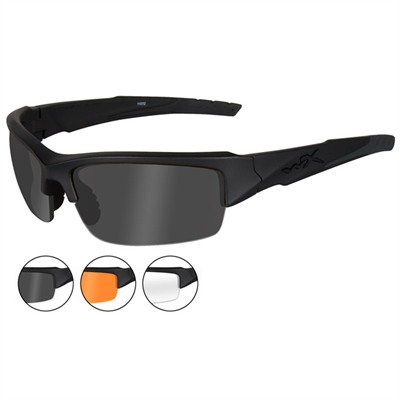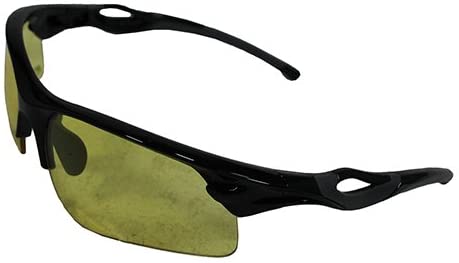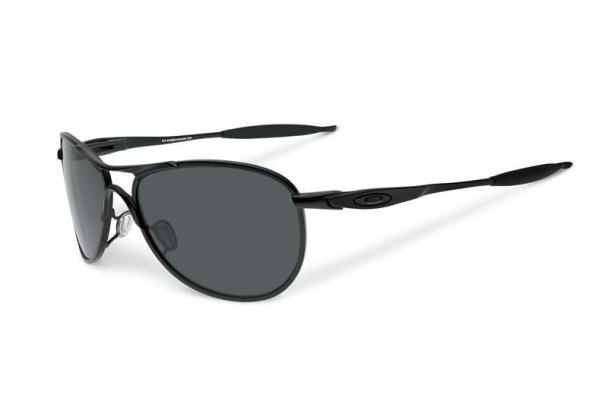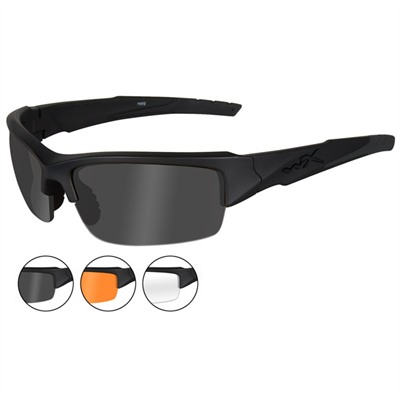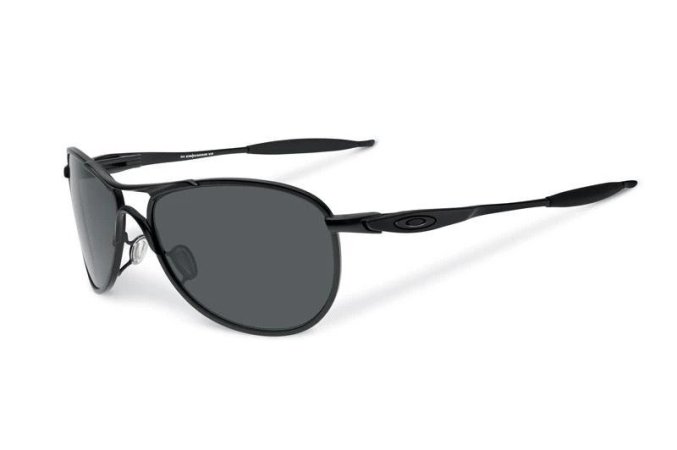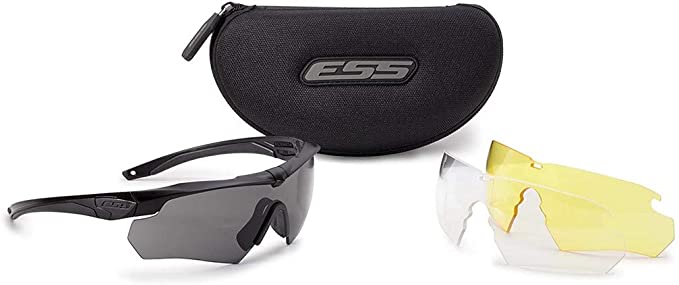We may earn revenue from the products available on this page and participate in affiliate programs.
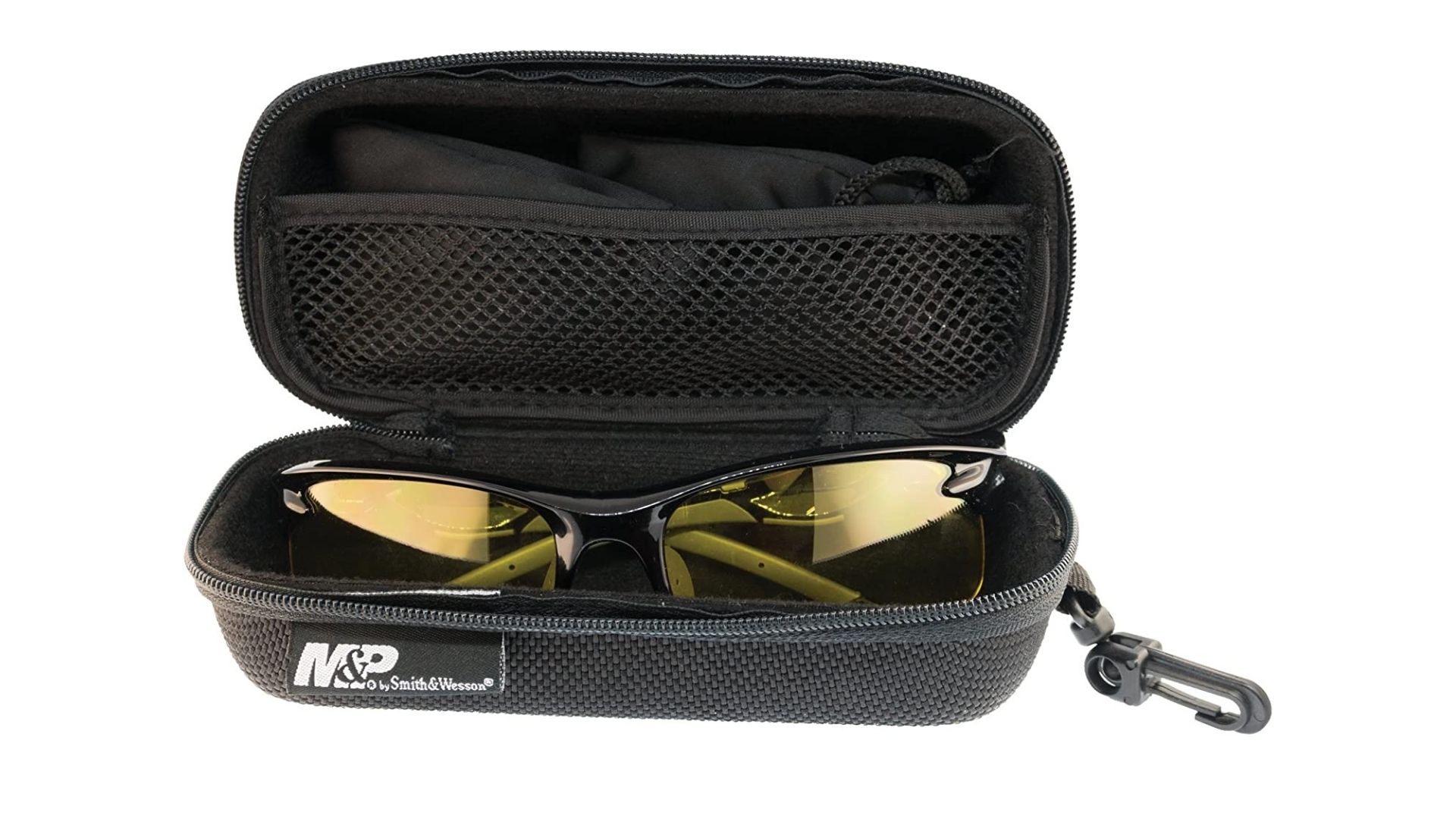
Whether you are a 20-year Green Beret, a newly-minted landscaper fresh out of high school, or somewhere in between, outdoor eye protection is an absolute essential. Everyone understands the kind of damage UV light can cause, but tactical sunglasses provide extra levels of protection to one of your most valuable assets: your eyesight. When your work environment or a weekend trip to the range involves fast-flying debris of one kind or another, having a quality pair of Magpul, Oakley, or Wiley X shades will clear your mind of minor threats and free you up for distraction-free decision-making.
Whether your next step involves identifying a potential threat to your teammates or something involving a little less urgency, the right pair of tactical sunglasses will keep your eyes clear and protected while you accomplish the mission at hand.
Wiley X Valor
Smith u0026 Wesson Mu0026P Harrier
Oakley SI Ballistic Crosshair
ESS Eyewear Crossbow 3 Lens Kit
Oakley Flak Beta (Asian Fit)
Related: Eye-pro for the pros: 6 ballistic glasses you should know about
Why should you trust us
As a shooter with a professional background in aquatics (translation: long days in the intense Colorado sun and its vengeful glare), I know the value of a solid set of shades. The sun’s UV rays can give your eyes a beating, and when you add in other environmental attackers, such as dust, dirt, and metallic debris, you can’t rely on simple, molded plastic sunglasses to keep you safe. When it comes to keeping airborne brass and sunlight out of my eyes, I’ve learned a thing or two over the years. I’ve even written up another guide about safety glasses in case your interests take you beyond the range or the field.
Popular types of tactical sunglasses
Interchangeable lens kit
Beyond the basic single-lens offerings on today’s market, you will fit a number of tactical sunglasses kits which come with a collection of interchangeable lenses and a single pair of frames. Most often, these kits will include a non-polarized set of lenses without any polarization and one or two additional pairs of lenses: clear and/or low-light (yellow, amber, copper, etc.). Oftentimes, replacement lenses are available from the manufacturer, so if glare is an issue, you can always supplement your kit with a new pair of polarized lenses.
Prescription sunglasses
Some of the best tactical operators in the world couldn’t hit the broadside of a barn without their prescription lenses. Ok, so maybe that’s a bit of an exaggeration, but sometimes prescription tactical sunglasses are an absolute must-have. Sure, there are options that will fit over traditional eyeglasses or you could settle for wearing contacts with regular ol’ sunglasses, but let’s face it: Tactical environments are not particularly forgiving of either solution. As such, investing in a pair of prescription shades with the ballistic performance to keep you in the fight. The only downside with this solution is the extra cost and the need to order from either the manufacturer or the optician.
‘Asian fit’
The human body is simultaneously uniform and unique, and the same goes for our facial structure. Most standard tactical sunglasses are designed around the dimensions of the average Caucasian face shape, but ballistic shades made to these specs are not well-suited to fit many individuals of East Asian or Pacific Rim heritage. As such, many ethnically Asian or Pacific Islander individuals (and a few others) need a pair of ballistic sunglasses with a proper nose bridge, lens shape, and frame curvature to accommodate their face shape in such a way as to provide adequate protection from both sun and debris. Many brands offer Asian fit sunglasses, although a number of them use different descriptors, such as omni fit, universal fit, or low bridge fit to name a few. For a more thorough rundown on the topic, check out this helpful article from SportRx.
What to consider when buying tactical sunglasses
Before settling on a pair of tactical sunglasses, always make sure they fit properly. While one pair may fit some people very well, that same pair may not provide you with the level of protection you need due to the variations in human facial structure. Each person is unique, and finding the right pair takes a little patience. Find the right pair, and you’ll be golden for years to come.
Durability
While durability can be hard to quantify in terms of numbers and tests, this feature is especially valuable in tactical situations. The last thing you need is for your expensive new shades to fall off your face after only a mission or two. As such, tactical sunglasses should be built to last, no matter how rough the going.
Safety ratings
In the world of civilian eye protection, most people can settle for ANSI’s Z87 rating, signifying basic impact protection. Not so in the tactical world. High-speed impacts from flying debris and shrapnel are a very real concern, and any pair of shades worth their salt will bear the civilian ANSI Z87.1 rating (often listed as “Z87+”) as a bare minimum. All military-grade tactical eye protection with a Z87+ rating will also earn a passing grade when put through the paces of MIL-PRF-32432 testing standards.
APEL listing
Planning to head downrange? Make sure you throw a pair of APEL-listed tactical sunglasses in your ruck before you go. To earn an APEL listing, the Army’s official Nice List of combat-approved eyewear, tactical sunglasses must pass both MIL-PRF-32432 (shrapnel) and MIL-PRF-31013 testing protocols. While the first test is on par with ANSI Z87+ standards, MIL-PRF-31013 testing subjects eyewear to about seven times the amount of impact energy, and the Army has high expectations in terms of resistance to environmental and chemical resistance in addition to fit and material stability requirements. How can you tell if sunglasses are APEL-listed? Check out the Army’s current list. (Don’t be surprised by the lack of stylish offerings. Here, function trumps form.)
Ear protection compatibility
Hearing protection and comms gear are regular tools used in many tactical (and non-tactical) settings, but not all ballistic sunglasses are comfortable when worn long-term with ear protection. While some hearing protection is extremely low profile, such as SureFire’s Sonic Defenders line, traditional muffs are virtually standard issue for most shooters of one kind of another. As such, look for sunglasses with muff-friendly ear pieces.
Polarization
Glare can be a devastating opponent and one over which you have little control. That said, polarized lenses can go a long way in mitigating the effects of sun glare off of water, sand, snow, or the road ahead of you. Polarized lenses feature virtually invisible black lines running across them in a horizontal orientation. In practice, they act much like your fingers when you hold them between your eyes and the offending glare. The only downside is that they make it impossible to view electronic screens in most situations.
Lens treatments
Many quality tactical sunglasses come with both scratch-resistant finishes and anti-fog treatments. No matter how well you baby your new tactical shades, they will at some point be exposed to some form of abuse. As such, investing in a pair with scratch-resistant lenses will keep you from crying when you drop them unexpectedly. On the flip side, humid environments can adversely impact your visibility without the help of an anti-fog treatment thanks to the combined effect of your environment and your sweat.
Benefits of tactical sunglasses
Despite the buzz that tactical sunglasses impart to the civilian mall ninja population, tactical sunglasses provide a number of practical solutions to real-world problems, offering some distinct advantages over traditional eyewear. Of course, UV protection and polarization are excellent assets for anyone who spends significant amounts of time outside, but the most critical advantage tactical shades provide over off-the-shelf offerings is their ballistic protection. Whether you spend your time fighting flying grains of sand or taking down terrorists, ballistic sunglasses provide an unsurpassed level of protection from both foreseen and unforeseen hazards. Tactical sunglasses with interchangeable lenses can be a versatile tool, doubling as safety glasses for a backyard science experiment with your kids or standard eye protection for indoor shooting ranges. While the ESS Crossbow you used during your last deployment may not be the epitome of style and class, there are still plenty of tactical sunglasses out there that manage to combine performance with great aesthetics.
Pricing ranges for tactical sunglasses
If quality tactical sunglasses were cheap to make, you would find them at any number of big box stores, but sadly, this is rarely the case. Most ballistic shades of reasonably quality will set you back somewhere in the neighborhood of $50, but rather than going downrange multiple times over, these tend to be better for range use, casual wear, or as affordable backups should you misplace your Oakleys. With the exception of (usually) limited durability, you can expect to find offerings with polarized or interchangeable lenses. For something a bit more rugged, expect to be set pack somewhere between $75 and $150. Tactical sunglasses in this price range tend to be tougher, and many of them are engineered to meet APEL standards in terms of their ballistic performance even if they were never intended to make the final cut. Ballistic sunglasses wearing a price tag in excess of $150 tend to be high-end offerings from some of the best names on the market and have the quality to match. Again, they may not all make the Army’s “Nice List,” but they’ve got the ability to perform as peers to those that make the APEL.
How we chose our top picks
When reviewing new gear, we much prefer to go the hands-on route, but sometimes, a lack of resources may thwart our attempts to get our mitts on some cool gear. To make sure we don’t let you down, we take the time to listen to those who have firsthand experience, combing through reviews on Amazon, professional publications, enthusiast blogs, and more to bring you the best intel available. We sift through it all, keep the gold, and toss the rest.
Adding to our own hands-on experience with tactical sunglasses like the Wiley X Saint (a smaller version of the Valor), we received plenty of valuable input from the good people at Safety Glasses USA, SportRx, Oakley Forum, Officer.com, PEO Soldier, and The Firearm Blog.
Related: The best tactical boots to keep you grounded in any situation
